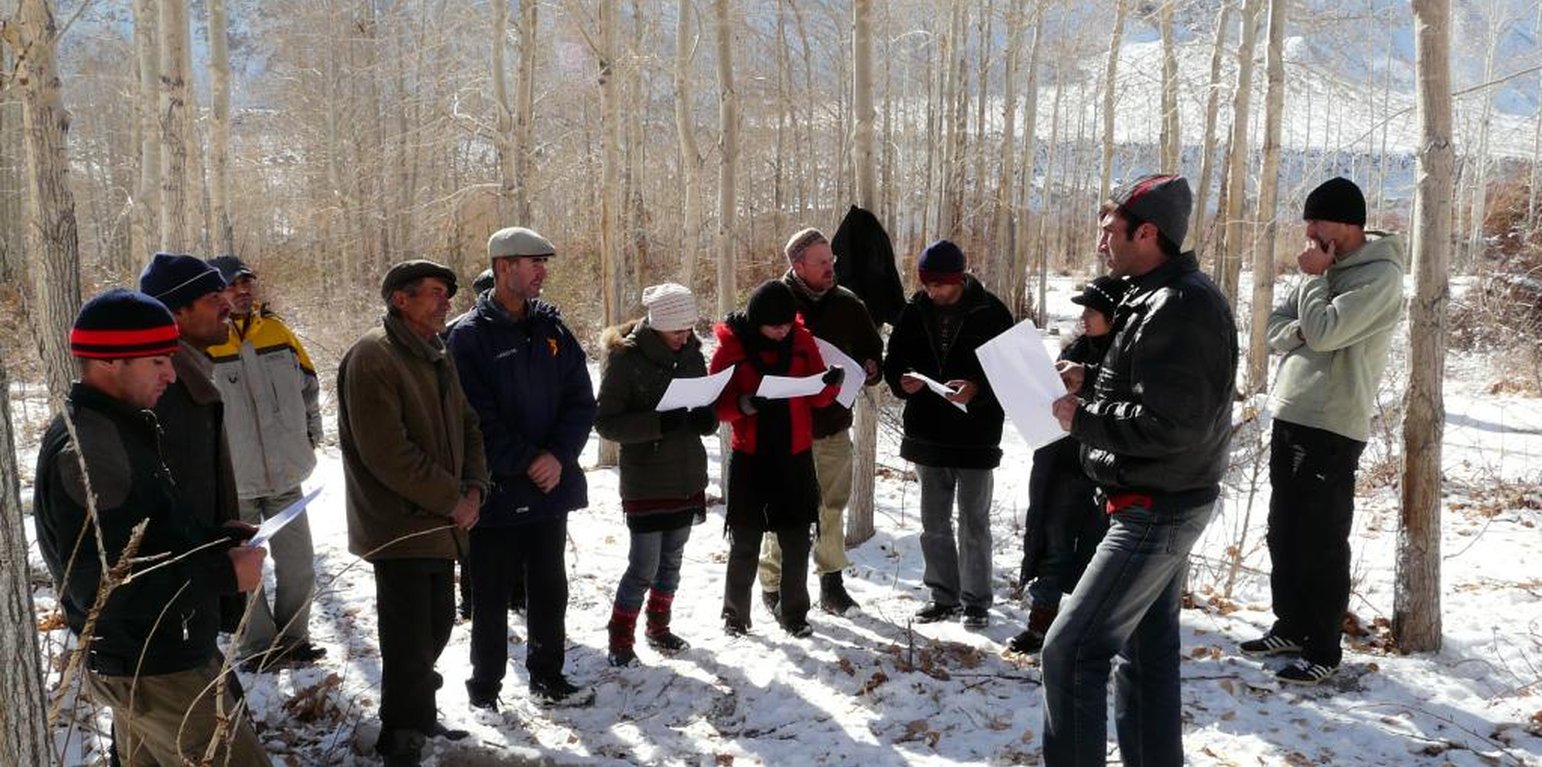



Aims / objectives: In Soviet times, the Gorno Badakhshan Autonomous Region (GBAO) had been highly dependent on subsidised fuel for heating and cooking. After independence, as fuel could no longer be imported from the former Soviet Union, more pressure was exerted on the flood plain forests, leading to severe degradation of the resources through illegal felling and livestock grazing. The State Forestry Agency does not have the financial means nor adequate capacity to implement a sustainable forestry management system adapted to the changed political, socio-economic and ecological conditions. The main aim of this approach is the rehabilitation of degraded floodplain forests in collaboration with the local users. This can only be achieved, if local users can see that they will benefit from conserving and developing the forest. Also, the State Forestry Agency is supported in its restructuring and gets an opportunity to achieve the protection of the forest, and economic goals through forest products and income from the rented forest plots.
Methods: \'Joint Forest Management\' (JFM) means that governmental organisations and local users are involved in forest management on the basis of a contract with a duration of 20 years, valid under Tajik law, which defines the rights and obligations of all the parties. As a first step, and in order to ensure the protection of the plot, a fence has to be built to protect reforestation activities from livestock (see Technology TAJ366). Adequate irrigation of the forest areas is also supported. Forest tenants as well as Forestry Agency staff are also trained in sustainable forest management techniques. Progresses and challenges are regularly being monitored and technical advice is being given to forest tenants.
Stages of implementation: The implementation includes eight steps: (1) field check and meeting with village representatives, (2) information workshop, (3) general agreement with the whole community, (4) selection of tenants, (5) division of the plots, (6) signing of contracts with the individual tenants, (7) elaboration of management plans and annual plans for each tenant, and (8) monitoring of annual plans.
Role of stakeholders: The annual plan is based on a 5-year management plan for the respective plot. It determines the amount of work undertaken by the forest tenant as well as harvests and their shares to be obtained from the rented area in one year. The rental contract, the management plan, and the annual plan are mutually agreed on by the forest tenants and the Forestry Agency. Forest tenants develop a sense of ownership and responsibility for the sustainable use of forests and forest resources on their plot. The State Forestry Agency is responsible for control and technical advice.
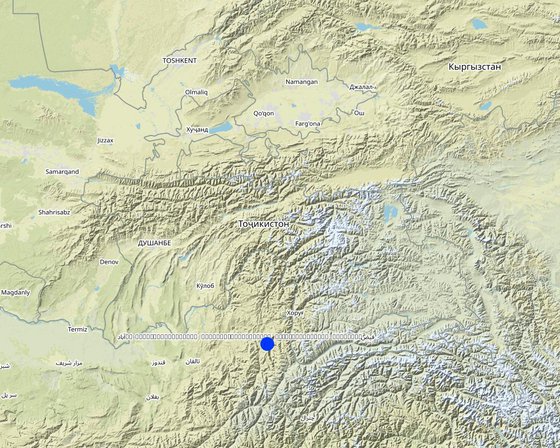
สถานที่: Ishkashim, Roshtkala, Shugnan, Tajikistan Gorno Badakhshan Autonomous Region (GBAO), ทาจิกิสถาน
วันที่ริเริ่ม: 2009
ปีที่สิ้นสุด: n.a.
ประเภทของแนวทาง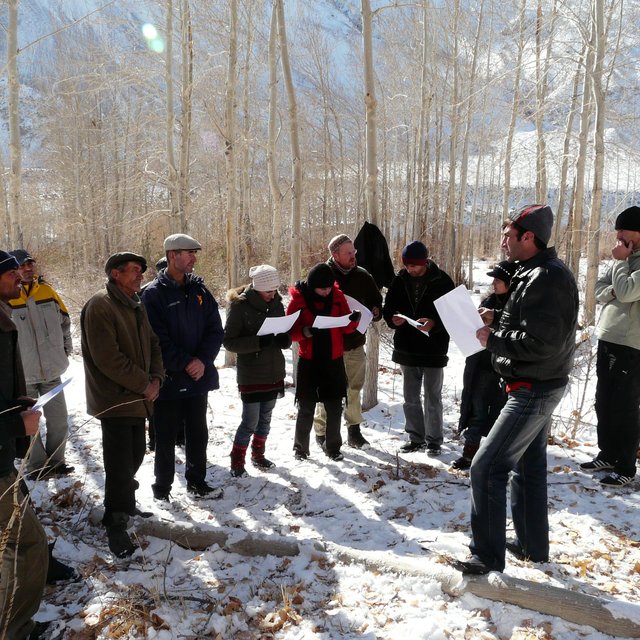
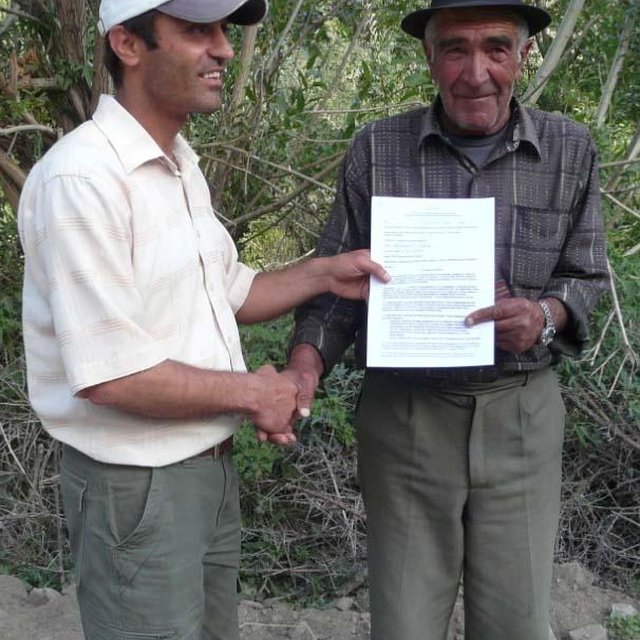
| ผู้มีส่วนได้เสียหรือองค์กรที่นำไปปฏิบัติใช้มีส่วนเกี่ยวข้องกับแนวทางนี้อย่างไร | ระบุผู้มีส่วนได้ส่วนเสีย | อธิบายบทบาทของผู้มีส่วนได้ส่วนเสีย |
| ผู้ใช้ที่ดินระดับท้องถิ่นหรือชุมชนระดับท้องถิ่น | Women and men, rich and poor are involved equally | Actual implementation in close cooperation with the other bodies |
| ผู้เชี่ยวชาญ SLM หรือที่ปรึกษาการเกษตร | GIZ project staff and forest specialists | Supporting local users in implementing the Technology with some modifications. The Approach has been designed by an international specialist, and some components by a local specialist Conducting workshops, providing technical advice |
| องค์กรพัฒนาเอกชน | International non-government | Coordination and financing of the project, design of the approach |
| รัฐบาลระดับท้องถิ่น | Support during implementation Cooperation, approval of the legal framework | |
| รัฐบาลแห่งชาติ (ผู้วางแผน ผู้ทำการตัดสินใจ) | Support during implementation Cooperation, approval of the legal framework |
Organisational chart shows how the project staff work with the State Forestry Agency.
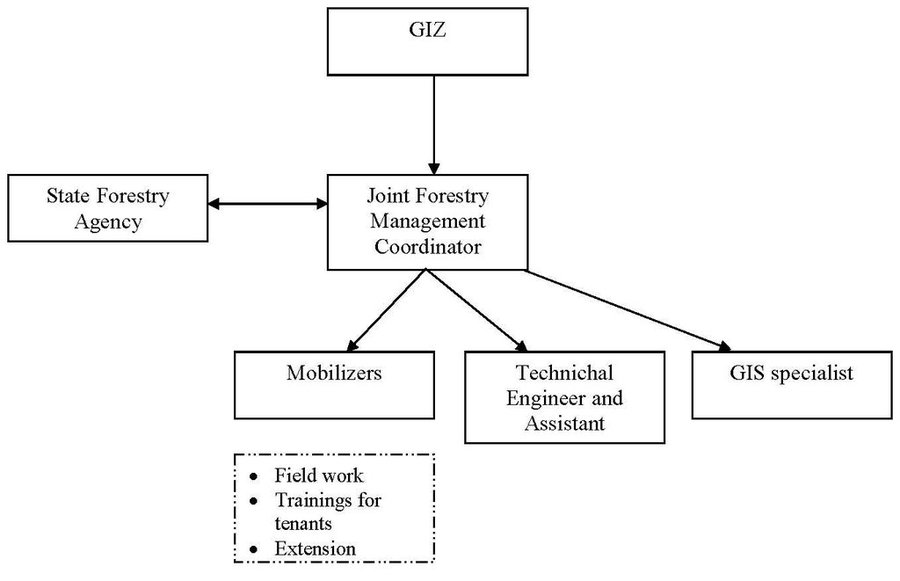
การตัดสินใจถูกทำโดย
การตัดสินใจถูกตัดสินอยู่บนพื้นฐานของ
Sustainable natural resources management, technical forestry knowledge (planting, thinning) and elaboration of management plans.
Excavator
Rehabilitation of some irrigation infrastructure
แรงงานของผู้ใช้ที่ดินคือ
The State Forestry Agencie's building was renovated and computers were provided for the Agency. Mobilisers were trained to conduct advisory services. Transport for field works was provided. The State Forestry Agency is being supported in its restructuring towards becoming a sustainable institution
The vegetation cover of the forest plots under JFM was improved through better protection and planting. No open access to forests was allowed, which prevents illegal and uncontrolled use of forest resources.
User rights are clearly assigned according to the law of the Republic of Tajikistan. Tenants and local people developed a sense of ownership and responsibility for the sustainable use of forests and forest resources.
Much interest among the land users as they have now legal access to the forest.